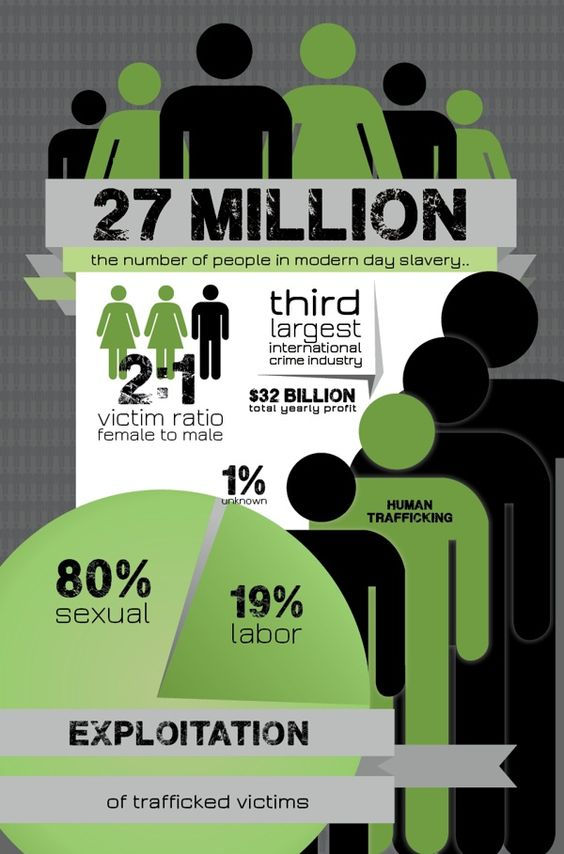What Human Trafficking is......not
- iarras7
- Jan 29, 2019
- 2 min read
Human trafficking is defined as “organized criminal activity in which human beings are treated as possessions to be controlled and exploited.” (Merriam-Webster).
Defining human trafficking is helpful, of course, but what is also beneficial is being aware of what human trafficking is not. Part of the effort to end human trafficking involves challenging the myths and misconceptions, so that the real issue can be faced and resolved. Advocates have worked tirelessly to define human trafficking and continue to work on confronting the myths that surround this crime because of the damage that they cause.
For a long time, many of us believed that most, if not all, cases of human trafficking began with a violent kidnapping by a stranger. However, not unlike domestic violence, most victims are forced into human trafficking by someone they know well, either an intimate partner or a family member, and physical force is not always present (Polaris Project).
When someone uses the term human trafficking they are not constantly referring to sexual exploitation. There were nearly 1,300 reports made to the National Human Trafficking Hotline in 2017 in which a person was forced to perform a service or labor that did not involve sexual abuse (National Human Trafficking Hotline 2017 Statistics). This is typically called labor trafficking and cases of human trafficking can involve either sex or labor trafficking, or both.
It is harmful to survivors for our society to believe that all victims of human trafficking are white females, and that this crime only occurs in countries outside of the United States. The reality is that there were 10,615 reported and identified victims of human trafficking in the United States in 2017 alone. Women, men, and survivors who identified as transgender were among these individuals. Of the same group Latino, Asian, White, Black, and multi-racial were the races and ethnicities that the survivors identified as (National Human Trafficking Hotline 2017 Statistics).

Human trafficking can occur in the same town where a survivor lives, and it can even happen
within their homes. An offender does not have to move victims out of a state or country for their actions to be considered human trafficking (PolarisProject.org).
Behind each fact and number there is a human being who has been sold, abused, and traumatized for the benefit of another person. Every single victim and survivor of human trafficking matters, whether their experiences fit into a statistic or not. Still, it is impossible to end human trafficking, in all forms and for all survivors, if we are not facing the real issue and instead continuing to believe harmful ideas that fit into our societal norms.
There are many more misconstructions of human trafficking and a great way to honor Human Trafficking Awareness month is to increase your person awareness of this violation of human rights. If some of these most common myths had you thinking or asking yourself questions, we encourage you to explore https://polarisproject.org/action/ and see what else you can do this month and beyond!
References
.png)



Comments